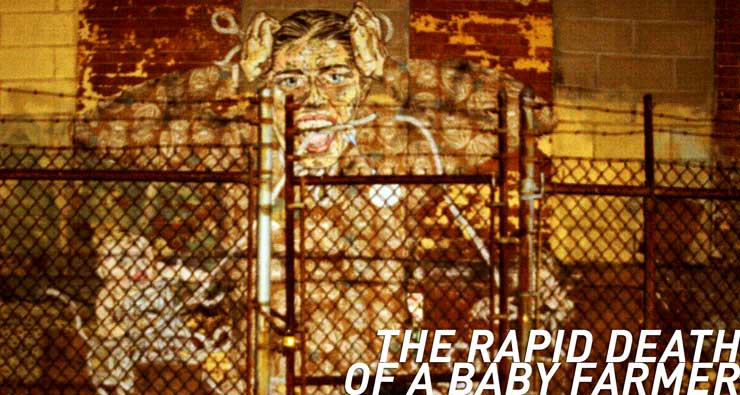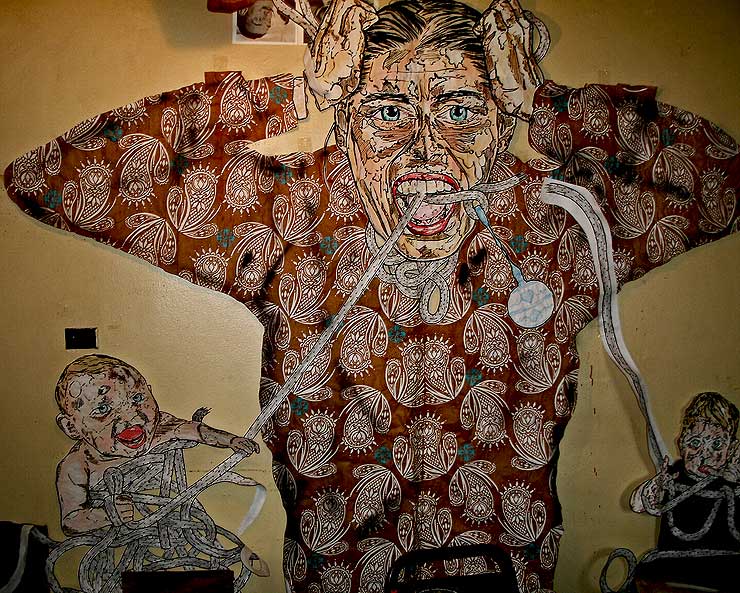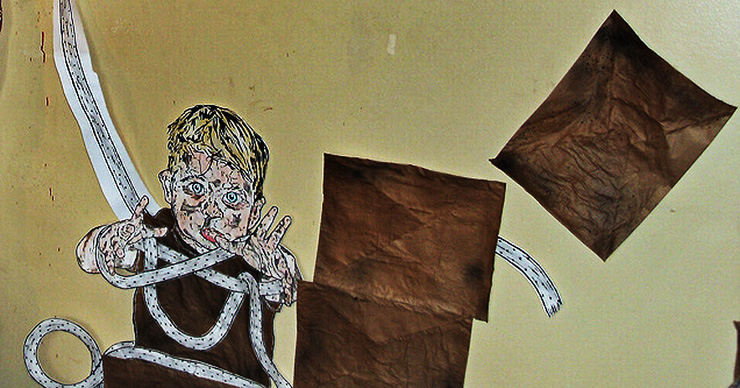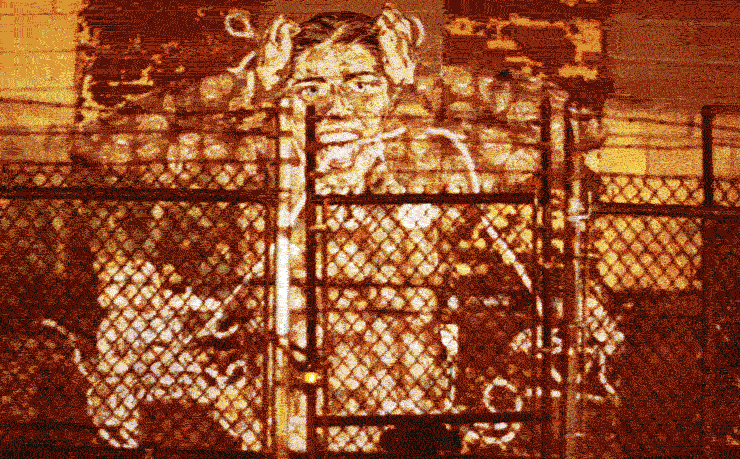Rapid Death of a Baby Farmer

Infanticide
A shocking true story from two centuries past provides the latest muse for Street Artist NohJ Coley, whose wheat-pasted intercedence on the behalf of infant victims lasts only one moon before it was washed away.
Amelia Dyer put a thinly veiled ad for “adoption” in the Thames Valley paper telling unwed mothers in the 1890’s that they could safely bring their illegitimate baby to her farm and know that the child would be raised and their reputations could stay intact. In fact, once back in her house, Mrs. Dyer tied a string around the neck of the child and choked it; a fate that awaited her in the Summer of ’96 when she was convicted of killing 6 such infants. It is believed that she actually murdered 50.

The blurry photo above is all that remains of the linotype cutout NohJ Coley affixed to a wall recently behind barbed wire. A fleeting Blair Witch of a moment, intended by a passing street art photographer to mark the spot for a shot in the sunshine at dawn. But when he returned at sunrise the piece was washed and scraped off, the damaged evidence floating in a puddle at the base of the wall, much like the babies Amelia Dyer placed in paper sacks and dumped into the Thames River.

While the brand new street art piece may have been in an approved location, the subject matter was not quite palatable. Says Coley, “My theory as to why the piece was removed is the subject matter. I don’t think the owner of the property could sit well with a women screaming while pulling out her hair and two infants pulling rope out of the back of her throat. If the images on the wall were less harsh and more alluring I believe that the work would still be on the wall today.”

To complete this sordid snuffing story, we offer you these exclusive in-studio photos of the piece in studio during the preparation. The artist intended the piece to be a damning indictment, and a figurative repayment by the tender sucklings who were snuffed.
 Says Coley, “Basically I am allowing these infants that were brutally murdered to have some sort of revenge for their untimely deaths.” Ironically the piece was rubbed out before it could run.
Says Coley, “Basically I am allowing these infants that were brutally murdered to have some sort of revenge for their untimely deaths.” Ironically the piece was rubbed out before it could run.

***************************************
- Dr. John Brendon Curgenven, op. cit., p.3.
- James Greewood, The Seven Curses of London, Chapter III.
 BROOKLYN STREET ART LOVES YOU MORE EVERY DAY
BROOKLYN STREET ART LOVES YOU MORE EVERY DAY








